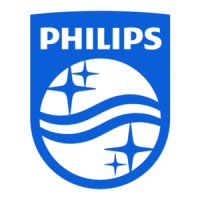
Do you have a question about the Philips SOPHO Call@Net and is the answer not in the manual?
| Category | PBX |
|---|---|
| Brand | Philips |
| Model | SOPHO Call@Net |
| Protocols | SIP, H.323 |
| Features | Voicemail, Call forwarding, conferencing |
| Power Supply | 100-240V AC, 50/60Hz |
Details digital connections via analogue lines using modems or purely digital connections.
Explains establishing data connections over analogue trunk or tie lines using modems.
Covers data connections via digital trunk or tie lines to external PBX or PSTN.
Explains connecting DTEs to ISPBX using analogue connections via modems.
Describes connecting DTEs to ISPBX via Digital Line Circuit (DLC) or Digital Trunk and Extension (DTX).
Details the two systems of data transfer: with and without data rate adaption.
Explains X.21 protocol for synchronous data transmission between DTE and DCE.
Details connecting a DTE to an ALC via a modem for analogue trunk connections.
Explains modem interconnection for DTEs via DLC/DTX to analogue trunk or tie-lines.
Describes using MLU for switched line configurations with modems in a pool.
Details SOPHO-LAM P375 configuration for switched lines in convertor mode.
Explains connecting DTEs to ISPBX via Digital Trunk Units (DTUs) to the public network.
Details connecting a DTE to an ALC via modem for digital trunk connections.
Describes data transfer between DTE and SOPHO-SET/LAM via V.24 or X.21 interface.
Explains methods to prevent interruptions in data connections from third parties.
Outlines factors for determining connectivity, including IBSC and BSPT.
Details assigning CVs to ports and defining connection allowances for compatibility.
Explains how ISPBX determines convertor (modem) type based on CV and tables.
Details using modems in a pool for analogue trunk lines for voice and data calls.
Explains using modems in a pool for leased lines to fixed data parties.
Explains SOPHO-LAM P375 operating in DTE mode for convertor configuration.
